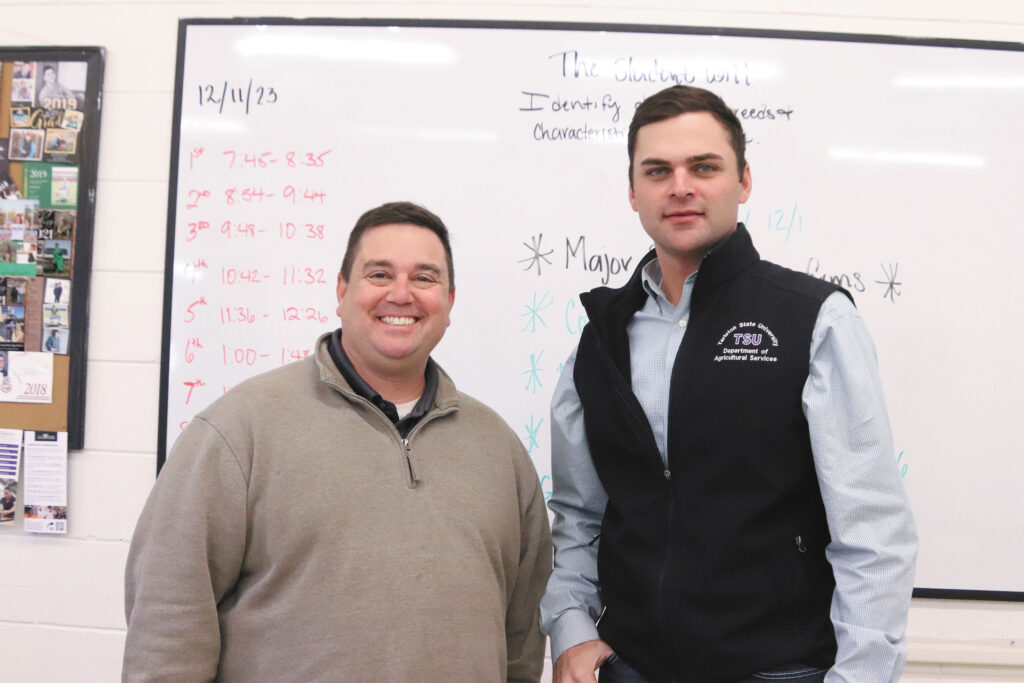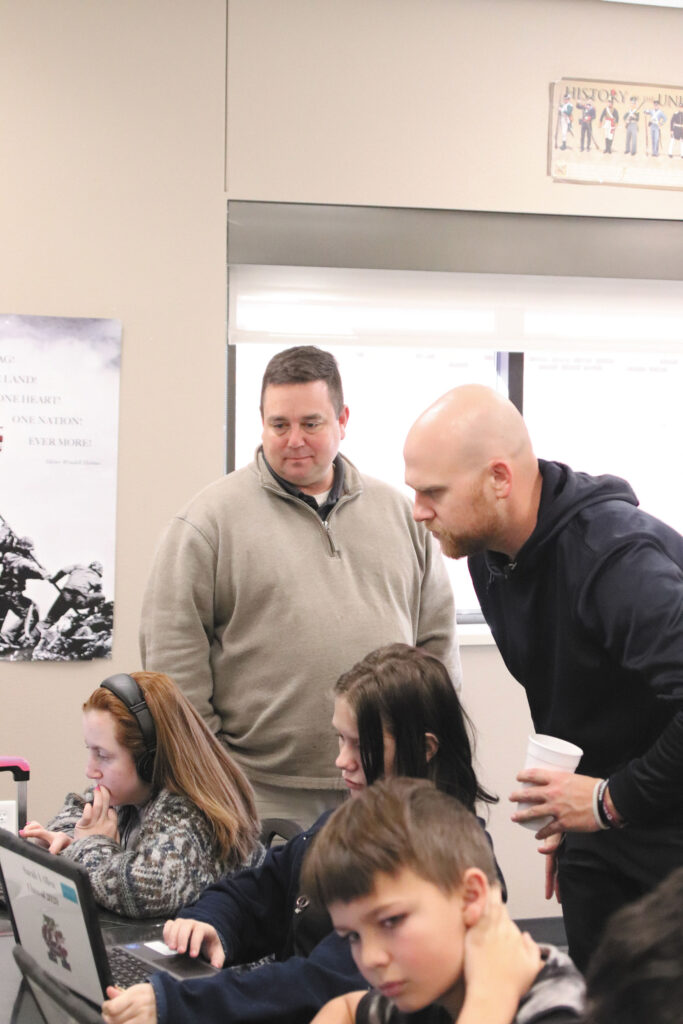Role Call: March 2024
In the past decade, I have had the privilege of serving in leadership roles where I hired dozens of teachers, paraprofessionals, and auxiliary staff. I remember some successful hires, like the time I hired a coach who ended up being Texas Girls Coaches Association coach of the year. I hired a special education teacher who served in the same role for dozens of years and affected many positive changes for our kids. I hired a band director who transformed the culture of the band—and the entire school building—for the better.

Then, there are those that did not work out so well. I hired a teacher who was absent 39 times in the first semester. I also hired a paraprofessional who has yet to report for duty. Win some, lose some.
As a doctoral student nine years ago, I focused my dissertation on new teacher mentoring and induction. In many of the districts where I have worked, I have tried to engage purposefully with our new teachers in an effective manner to help them be successful. After all, their success yields our students’ success.
During my studies, I reviewed what the literature said about attrition rates, induction models, systemic programming, and mentoring efforts. I looked at the work of education researchers, such as Richard Ingersoll and Linda Darling-Hammond, to inform my thinking as I sought to evaluate mentoring programs in schools. In this article, I draw on their work and share what I have learned about leading in rural schools, where I’ve spent my 16-year career. My purpose is straightforward: to help new school leaders elsewhere retain and support good teachers.
In rural communities, like mine, students and teachers form lasting bonds quickly. Smaller class sizes and fewer disciplinary issues are attractive for applicants; however, limited budgets, lower salaries, and inadequate resources tend to be the trade-off. Teachers do not leave classrooms in rural schools at the same rate as they do in our urban counterparts. However, when they do, it hurts.
Seemingly more and more, the vacancies are cropping up and are taking longer and longer to fill. Research from studies done in conjunction with the National Center for Education Statistics show that smaller schools bear a greater burden in terms of vacancies, percentage wise, than larger schools do in elementary, special education, and core subject areas. Every vacancy affects our students and the learning environment. Although the federal government does not regularly provide statistics for teacher attrition, some states do track the data and show that more teachers than usual left the profession between the 2021–22 and 2022–23 school years.
Recruitment and Retention

When trying to decide how to retain, recruit, and train new teachers, I take a very simplistic approach; I ask the teachers. I have asked some of my teachers (via social media) to explain their experience as a new teacher and what I, as their campus principal, could have done differently to make the experience better. These are teachers that I have hired who were new to education and have since spent years in education. They are not at my current school, so their participation in my study meant that much more. They were volunteers willing to give feedback on the process. I hired each of these teachers in their first year of teaching, and they were absolutely diamonds in the rough. One teacher I asked said the following:
“The reason I decided to get into teaching was due to my older brother. He coached, taught, and became an AD and I’ve always been very passionate about sports…The reason I’ve stayed in teaching is because I love what I am doing. I’ve created a great bond with these students and I love sports. In addition, the community has been amazing and they have showed me all love and respect since day one. The only thing I believe that could be done better is the pay for all the teachers. Other than that, I’ve really enjoyed my time here.”
Another teacher responded similarly: “I stayed because I knew I could make a difference in my students’ lives. They were and many still are ‘a mess’ [but] my goal is to be the positive influence in their lives and school experience.” This teacher credited his mentor with helping him find his feet in the classroom. As for administrative support, he said a strong school leader is “an administrator that has your back with ‘boots on the ground.’ People that support your efforts with challenging classroom situations such as discipline and consistency with the enforcement of rules.”
Another teacher said that making a difference prompted them to pursue a career in education:
“After working in retail for over 25 years, I began to notice I made little to no impact. I decided it was time to change to a profession where I knew I could make a difference. So, I re-enrolled in college and became a band director. During my student-teaching time, I was fortunate enough to meet an amazing assistant principal that treated every student with respect and love.”
During these conversations, it became clear that these new teachers entered the profession to impact the lives of others. Many of us get into education for that exact reason.
Perhaps a reason for the burnout that creeps in for so many is because they do not “feel a warm, inviting presence from the administration and faculty” as one teacher told me. Often, we enter the profession with the best of intentions. However, if we lose our “why” as author Simon Sinek points out, we start to question our effectiveness. That questioning, left to its own devices, leads to doubt and destruction.
After visiting with a colleague, Aric Bostick, this summer, I learned about attachment theory in adult education. Bostick, an education consultant, masterfully helps educators learn about “the power of attachment-informed leadership.” Derived from the seminal works of psychologist John Bowlby, the concept is powerful and empowering. Helping others grow starts with a feeling of belonging. Just as that one teacher identified the “warm, inviting presence,” our educators must experience that and, to a large degree, replicate it with the students they care for each day.
Get to Know Your Teachers
At our school, we have something we call “Rookie Club,” specifically geared toward new teachers. It is an opportunity for them to visit with one another and more experienced teachers and learn about the culture of the building. They also explore topics that come up throughout the school year, such as grading by rubrics, project-based learning, or feedback on lesson design, and collaborate in a meaningful way. Inspired by Sinek’s work, we have started a professional development workshop called “Find Your Why.” We conclude it with a letter that teachers write to themselves. This letter reminds teachers of their why for what they do.
After they write these letters, they seal them, and give them to me. Letters are then given to the teachers throughout the year when the work becomes challenging. The purpose is twofold: to uplift our teachers and remind them why they do what they do, and to show them their principal recognizes when times are tough. It ultimately reminds us all that we are on the same team.
Finally, I suggest we as school leaders take the time to get to know our teachers. I know it’s easier said than done in a world that pulls an administrator every possible way. However, it is an investment in our school culture. The teachers I asked about retention were those that I knew something about, which is why I knew they would share meaningful responses. They are people who work hard each day and who I found a way to connect with. Because of that, they worked harder for their community. In many ways, I worked harder for them. Connecting with your teachers only helps them grow. Being deliberate and intentional about building up your staff will only show quality gains for your school.
John Sherrill, PhD, is the principal of Archer City High School in Archer City, TX, and an adjunct professor at Sul Ross State University in Alpine, TX.
References
Barnum, M. (2023, March 6). Teacher turnover hits new highs across the U.S. Chalkbeat. chalkbeat.org/2023/3/6/23624340/teacher-turnover-leaving-the-profession-quitting-higher-rate
Ingersoll, R. M., & Tran, H. (2023). Teacher shortages and turnover in rural schools in the US: An organizational analysis. Educational Administration Quarterly, 59(2), 396–431. doi:10.1177/0013161X231159922
Monk, D. H. (2007). Recruiting and retaining high-quality teachers in rural areas. The Future of Children, 17(1)155–74. doi:10.1353/foc.2007.0009
